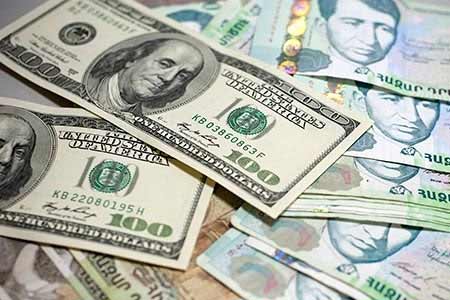


ArmInfo. Armenia, like Kyrgyzstan, has made quite good progress in terms of the share of national currencies in mutual settlements, but these are rather point stories. Natalya Lavrova, Head of the Department of Macroeconomic Analysis and Statistics of the Project Unit of the Eurasian Fund for Stabilization and Development (EFSD), said this during the presentation "Enhancing the role of the national currencies of the EAEU in international settlements".
"If you look at the trade between Armenia and Russia, it should be noted that the share of the dram is quite high - about 4%. The question is how to further increase these volumes, what incentive measures should be implemented. And here it is extremely important to focus not on the success of a separate national currency, but on reducing the level of dollarization in the countries and economies of the EAEU, '' she said. At the same time, according to Lavrova, the share of the dram is insignificant within the framework of mutual settlements of the EAEU, and in most cases is concentrated in the Russian economy. "To increase this share, the Armenian economy should probably focus on promoting its currency everywhere, not being limited to Russia, but working in this direction of other countries with whom there is active trade," the expert added. At the same time, Lavrova said that within the EAEU, 74% of mutual trade is carried out in national currencies, where the lion's share is in the ruble. In this regard, she stressed that there is potential for further growth. In the internal mutual settlements of the EAEU countries, following the results of the last 7 years, payments in national currency increased from 63% in 2013 to 74% at the end of 2019.At the same time, over the last five years, the share of the dollar has decreased from 25% in 2015 to 19% in 2019, and the euro occupies a modest place in the mutual settlements of the Union countries - about 7% over the period under review.
One of the main obstacles to strengthening the role of the national currencies of the EAEU countries, according to EFSD experts, remains macroeconomic problems. First of all, the persisting high transaction costs of using national currencies stand out, which is associated with a low level of economic diversification, relatively weak macroeconomic stability in a number of countries in the region and an insufficient level of development of financial markets.
To recall, the Eurasian Development Bank (EDB) is an international financial organization that promotes the integration and development of the participating countries: Armenia, Belarus, Kazakhstan, Kyrgyzstan, Russia and Tajikistan. The authorized capital of the EDB is $ 7 billion. The bank was established in January 2006 by Russia and Kazakhstan, with its headquarters in Almaty. The main share in the EDB's portfolio is occupied by projects with an integration effect in the areas of transport infrastructure, energy, chemical and mining industries, and mechanical engineering. The Eurasian Fund for Stabilization and Development (EFSD) in the amount of $ 8.513 billion was established on June 9, 2009 by the governments of the same 6 countries. The goals of the EFSD are to assist the participating states in overcoming the consequences of the global financial crisis, in ensuring their economic and financial stability and supporting the integration processes in the region. The EFSD member states endowed the EDB with the functions of the Fund Asset Manager and signed an Agreement with the Bank on the management of the EFSD funds.